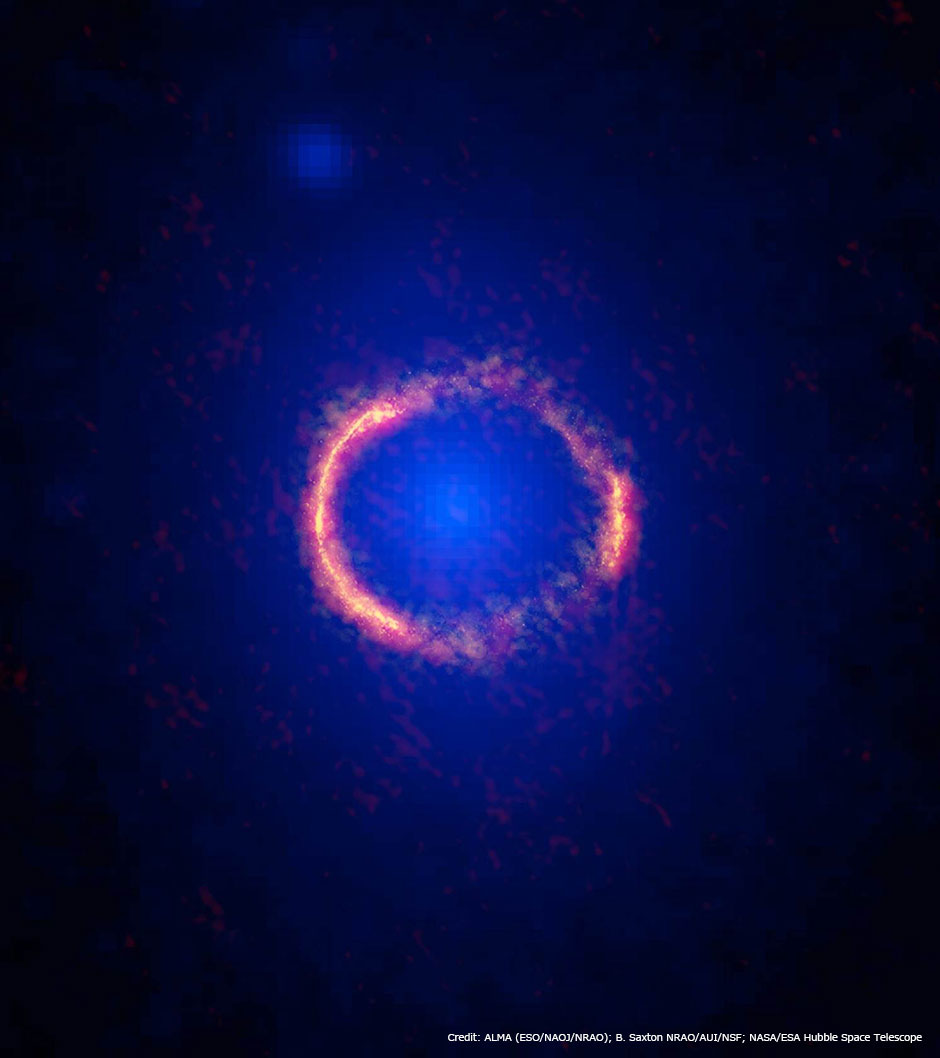The Complete Einstein Ring of Distant Galaxy SDP.81
Astrophotography・

This is the distant galaxy SDP.81 as seen by ALMA (in orange) and the Hubble Space Telescope (in blue). Due to gravitational lensing effects, the shape of SDP.81 appears stretched into a perfect circle (Einstein ring) in the ALMA data. In the Hubble data we can see the foreground galaxy creating the gravitational lens. Also, we can see that ALMA’s angular resolution exceeds that of the Hubble Space Telescope.
Distant Galaxy Seen Through High Angular Resolution
SDP.81 is a distant galaxy located 11.7 billion light-years away. If expressed in terms of human visual acuity, this picture was taken by ALMA with a resolution of 2600. Through gravitational lensing, the gravity of the foreground galaxy has distorted the image of the distant galaxy into a circle known as an Einstein ring. Capturing this complete of an Einstein ring in either visible light or radio wave observations is extremely rare. It can be said that this was successful for the first time due to ALMA’s high angular resolution and sensitivity.
For more details, please refer to the press release “Unprecedented views of lensed galaxy and asteroid Juno taken with ALMA.”
Translation by: Ramsey Lundock (NAOJ)
Image Data
| Date | October 2014 |
|---|---|
| Object | SDP.81 (in the direction of the constellation Hydra) |
| Telescope | ALMA (Atacama Large Millimeter/submillimeter Array), Hubble Space Telescope |
| Wavelength | 2mm, 1.3mm, 1.0mm |
| Instrument | ALMA Bands 4, 6, and 7 |
| Credit | ALMA (ESO/NAOJ/NRAO); B. Saxton NRAO/AUI/NSF; NASA/ESA Hubble Space Telescope |